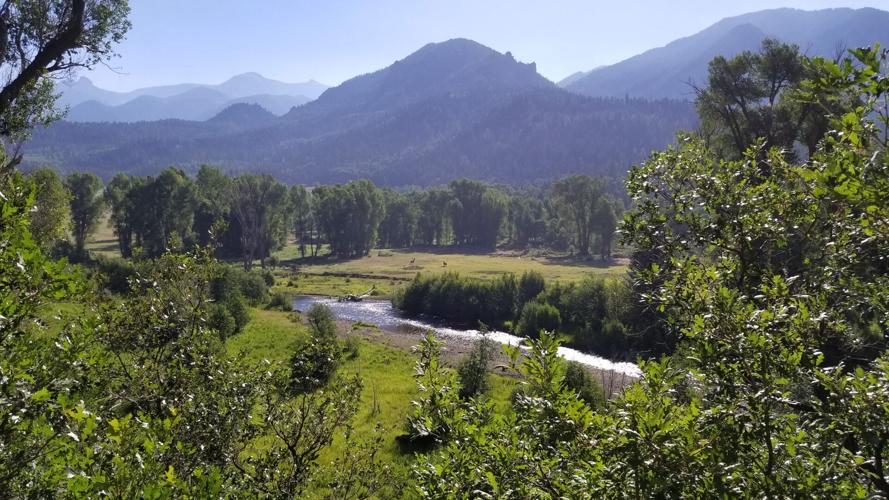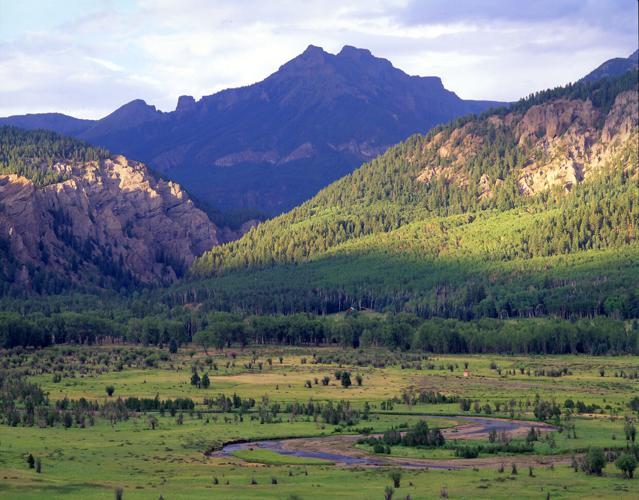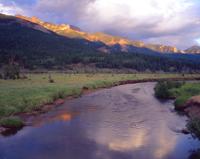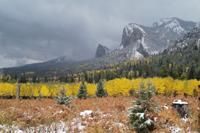For two decades, for as long as Christine Quinlan has taken visitors to a remote, little-known swath in southwest Colorado, she's found the response to be the same.
"It's really one of the most scenic, unique places that we have left in Colorado," she said. "And when we take people in there, they just go quiet. I mean, it's really national park quality in scenic appeal."
That appeal is partly why Quinlan's organization, The Conservation Fund, has long eyed the landscape, largely held by private ranching families for generations. In recent years, vacation homes have been built down the river-fed valley, marching upward in the direction of Banded Peak, like a throne over forested, craggy hillsides.
"Even though it's a bit remote," Quinlan said, "you can imagine someone wanting to put some sort of high-end development in there if we weren't doing this conservation work."
The work, nearly 30 years and $37 million in the making, culminated with an announcement at the end of July.
A conservation easement was acquired for Banded Peak Ranch. Its 16,723 acres "finishes the job," Quinlan said — "the capstone" for a total 65,000 acres that will remain wild, unspoiled in this Navajo River watershed about 20 miles southeast of Pagosa Springs.
Tom Macy, a partner of Quinlan's from the beginning of the effort, called it "one of the wildest and most pristine landscapes we have protected in Colorado."
The Conservation Fund dates back to 1985. This project launched soon after with the nonprofit rallying federal, state and private players to rack up the money needed to safeguard the dazzling expanse.
It started down valley with seven, smaller ranches, Quinlan said. "The prize," she said, was always Banded Peak Ranch, owned by the family who has also run cattle on the adjacent Catspaw and Navajo Headwaters ranches, previously conserved and similarly dotted with high peaks and shimmering streams.
In the news release, family representative Karin Griscom counted her kin as "dedicated to land conservation and land stewardship in Colorado and elsewhere for many years" and called it "a privilege" to work with The Conservation Fund. Quinlan counted the team "lucky" to work with landowners "interested in keeping Colorado Colorado."
The private ranches will remain that; the public can roam the peripheries, South San Juan Wilderness to the west, Rio Grande National Forest to the east and Continental Divide Trail to the north. The easements mean "what gets restricted and eliminated forever is subdivisions and any kind of significant development," Quinlan said. "You'll never see a resort in this valley."
On Banded Peak Ranch, the easement preserves 33 miles of streams feeding a system especially critical to New Mexico. The tributaries benefit the San Juan-Chama Project, supplying drinking water for up to 90% of Albuquerque.
Along with water, conservationists had wildlife in mind in the mission. Elk, bighorn sheep, peregrine falcons and the federally threatened Canada lynx call the area home. As does a particular strain of cutthroat trout believed extinct until a 2018 discovery.
On the upper reaches of the Navajo Headwaters Ranch, Colorado's last known grizzly bear was shot and killed in 1979.
"I realize (Colorado Parks and Wildlife) isn't proposing this," Quinlan said, "but if we were ever going to have those kinds of key species back in Colorado, it'll be because we have places like this available."
And more places like this could be realized with a fully funded Land and Water Conservation Fund, advocates say. With a signature Tuesday, President Donald Trump restored the fund's full $900 million for just the second time in 50 years.
Advocates says that will mean more money to go around to organizations such as the U.S. Forest Service's Forest Legacy Program, which contributed $7 million to make the Banded Peak Ranch deal possible. Great Outdoors Colorado and the private Wyss Foundation also have been instrumental to the project.
"This is prime example of how those federal dollars can leverage state and private dollars to get large-scale projects like this done," Quinlan said. "To be able to do big, landscape level conservation, we need the Land and Water Conservation Fund."














 Your Privacy Choices
Your Privacy Choices